 A lot of children have overbites, leading parents to wonder when they should bring to a dentist to be fixed, and if fixing it is even necessary. Unfortunately, overbites have to be fixed and the sooner it is corrected, the better. If left untreated, it can lead to developmental problems of the teeth and could possibly damage the teeth. 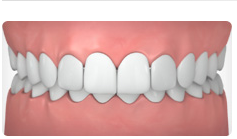 Class 2 malocclusion, called retrognathism or overbite, occurs when the upper jaw and teeth severely overlap the bottom jaw and teeth. - Medline Plus Class 2 malocclusion, called retrognathism or overbite, occurs when the upper jaw and teeth severely overlap the bottom jaw and teeth. - Medline Plus What is an Overbite? The term ‘overbite’ refers to a bite issue where in the upper teeth is protruding over or overlapping the lower teeth. The lower teeth can be completely hidden by the upper teeth or the lower teeth could be overly behind. In general, the upper teeth must be over the lower teeth by only about 1 to 2 mm. The lower teeth should be visible too. That is the ideal position. It is considered an overbite is the protrusion is more than 3 to 4 mm or totally covers the lower teeth. Overbites are quite common and can be corrected using braces or Invisalign. How to Evaluate Your Kid’s Overbite You must start checking your child’s teeth as young as the age of 5, in order to be aware of a developing overbite. A child with an overbite may have teeth not fitting together properly. If an overbite continues to develop, it can lead to a number of problems such as headaches, ear pain, difficulty chewing food, facial pain, neck problems, jaw pain and sinus congestion. It is important that a child with an overbite see an orthodontist before reaching 8 to prevent it from worsening. Why You Have to Treat a Child’s Overbite Early The sooner you fix an overbite, the better your child be able to develop. More extensive treatments can be also be prevented in the future. If left untreated, an overbite may cause the following problems:
How Overbites are Corrected Since children’s teeth and jaw are still developing, overbite treatment is not very complex. For children, the dentist will take X-rays and molds to know what exactly causes the irregular bite. Commonly used corrective methods are braces or braces with other auxiliary appliances that will straighten the teeth. Book an appointment with Dr. Soo Jun of Mint Kids Dentistry to discuss overbite treatments. 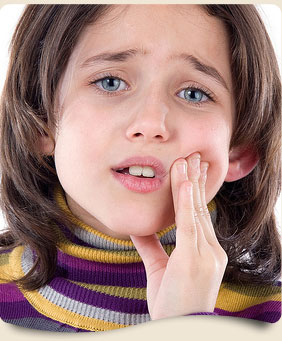 Toothaches have various causes. Usually, they are the result of a cavity. Other reasons may be a broken tooth, a loose tooth, an infection or simply a piece of food that become wedged between teeth. That is why, if your child is complaining of toothache, it is advised to floss before doing anything else. After that, rinse the area with warm water. Initial Steps to Relieve Toothache If the tooth pain persists, you may start by reducing swelling. If the child is old enough to swish, give him warm salt water solution to alleviate oral inflammation, advised by the American Academy of Pediatric Dentistry (AAPD). In a small cup of warm water, mix a teaspoon of table salt and stir. After that, apply a cold compress to the child’s cheek near the swelling area. Simply wrap an ice in a soft towel, help your child hold it in place to lessen the swelling and pressure inside the mouth. Cold therapy has also an anaesthetic effect that can reduce the painful sensation. Use Pain Medications at Home The next thing you should do is to give your child an oral anti-inflammatory medication suited for his age. Try giving a liquid form of medication. A table or capsule medication may be have for the child to swallow. Administer Advil, Tylenol or a tiny amount of an over-the-counter anaesthetic that contains Benzocaine. Clove oil can also be used as a topical antibacterial and analgesic to provide relief for toothache. Apply the oil using a cotton swab. Dab it on the affected area around the tooth gently. Never, under any circumstances, place aspirin directly on the gums or the tooth. This may cause soft tissue damage or even serious disease known as Reye’s Syndrome. If your child’s symptoms already include fever, fatigue, body malaise or throbbing pain, it is important to see a doctor as soon possible. If your child is having trouble breathing or swallowing, head to your local emergency room immediately. See Your Pediatric Dentist Soon When your child become more comfortable and calmed, visit your dentist. Toothache can be caused by a variety of issues. Never ignore an oral pain, even if your child may seem momentarily at ease. Look for professional help as soon as possible because an oral procedure or a prescription medication may be needed to the treat the pain symptoms effectively. Has your child complaining of a toothache? Follow the steps we have outline above to see if the problem is resolved. If not, contact Dr. Soo Jun of Mint Kids Dentistry as soon as possible. 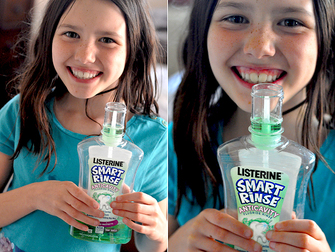 We know how important dental health is for your kids. Brushing every morning, after sugary and sticky snacks and before bedtime is encouraged. Some kids even enjoy flossing using flavoured dental flow. But how about mouthwash? Can children use it? Or, more fittingly, should they use it? Are Your Children Ready? Typically, mouthwash is not recommended for children under the age of six. Some types of mouthwash for kids contain fluoride. While fluoride is beneficial for preventing tooth decay, having too much too early may result to fluorosis. Fluorosis can happen only when a child’s teeth are still developing, and this condition may affect the texture and color of the teeth. Your child’s teeth could develop brown spots or the surface of the teeth may be rough. Fortunately, fluorosis is simply cosmetic and can be prevented by making sure your child does not use mouthwash too soon or ingest fluoride toothpaste. Remember that even if your child’s teeth are ready for use of mouthwash, your kid might not be. Just like toothpaste, mouthwash must be spit out. However, it can be complicated, especially for young kids to swish the liquid instead of swallowing it. One way to see if your child is ready to use it is to have him take a sip of water. Let him swish it around his mouth and then spit it out. If your child can perform this, they can most likely handle mouthwash. 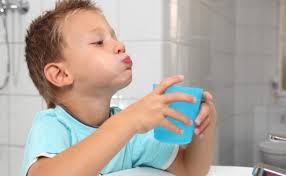 Why Use Mouthwash? Mouthwash is intended to enhance the effects of brushing and flossing. It can help give a fresher breath. Mouthwashes with fluoride provide more cavity protection for children over the age of six. If your child is wearing braces, using it can loosen the food bits that usually get stuck in the brackets, providing a more thorough cleaning until the braces come off. Using a mouthwash for kids is also beneficial for those who have not yet mastered flossing or brushing yet. How to Use Mouthwash? When your child use a mouthwash for the first time, it is important to provide supervision to ensure he does not swallow it accidentally. Create a game out from using it. Use a stopwatch and time them for about a minutes and then, say ‘Spit!’, when it is time to spit it out. By supervising your child in the early phase of using mouthwash, it will also ensure that he is brushing and flossing before using the rinse. Since mouthwash is not a must-use item for each child, ask your pediatric dentist before using it. He might recommend a mouthwash product that will benefit your child’s teeth.  Nowadays, toothpastes come in a variety of different brands and flavors, specially made for kids. There is a multitude of choices available that can actually make choosing the best toothpaste for your child a daunting task than expected. Choosing the right toothpaste is an important factor to promote good oral hygiene and in keeping the healthiest smile possible for your child. 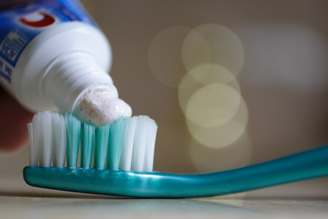 What exactly is a Toothpaste? Toothpaste is a product that cleans the teeth and maintains oral hygiene. It contains health increasing components such as fluoride, antibacterial agents and mild abrasives. The fluoride helps strengthen the hard enamel surface of the teeth to help protect them from cavities. The antibacterial agent destroys the bacteria in the mouth, preventing bad breath and the formation of dental caries. On one hand, the mild abrasive, through the help of a toothbrush, help scrub off the stains on the tooth surface. Why Is It Important to Use Toothpaste? The human mouth contains thousands of different types of bacteria that group together to form a film over the teeth known as plaque. If the plaque isn’t eliminated thoroughly, it can build up over time causing a number of oral and dental issue such as tooth cavities, halitosis or bad breath and gum disease. It is important to brush your teeth twice a day using fluoridated toothpaste to reduce the risk of the developing dental health problems, promote general health and wellbeing and help create a lasting healthy smile. 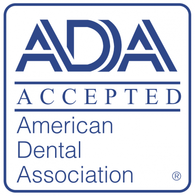 How to Choose the Best Toothpaste for Kids To help you decide the right toothpaste for your kid, consider the following guidelines: Look for the ADA Seal. Choose a toothpaste that has been approved as sage and effective for use. To make sure you’re buying a quality product, look for the seal of approval of the American Dental Association, known as the ADA Seal of Acceptance, which can be found on the toothpaste packaging. The ADA Seal ensures that the toothpaste have been approved and tested as safe by the ADA Council on Scientific Affairs. However, the most reliable person for dental product recommendations is still your child’s pediatric dentist. Being a specialist, he/she can provide direction and guidance in choosing the best toothpaste for your child. Stay away from harsh abrasives. Looking for an age-appropriate toothpaste for your little one is actually tricky, since some products consist of harsh ingredients that could erode young tooth enamel – the teeth’s protective outer coating. Abrasives are key in removing the plaque and polishing the teeth. The problem is, some products contain large amount of alumina and phosphates which can be too harsh for young enamel. This may cause your child’s teeth to become too sensitive. Talk to your pediatric dentist which toothpaste brand is age appropriate for your child. Choose a product with fluoride. Based on the American Dental Association, kids of all ages must use toothpaste that contains fluoride. It helps protect the teeth from plaque and cavities. But ingesting fluoride isn’t healthy, particularly for young children, so the amount of toothpaste use should be controlled. Consider flavor. While flavor may not be considered relevant to oral health, deciding a toothpaste that actually tastes good may help your child get more excite about tooth brushing. Some kids don’t like the ‘spicy’ or ‘minty’ taste. Most adults prefer this flavor but kids tend to brush more when using fun toothpaste flavors such as bubble gum or strawberry. |
AuthorMint Kids Dentistry Archives
July 2021
Categories |
Location |
|
Sitemap
|
Forms
|

 RSS Feed
RSS Feed